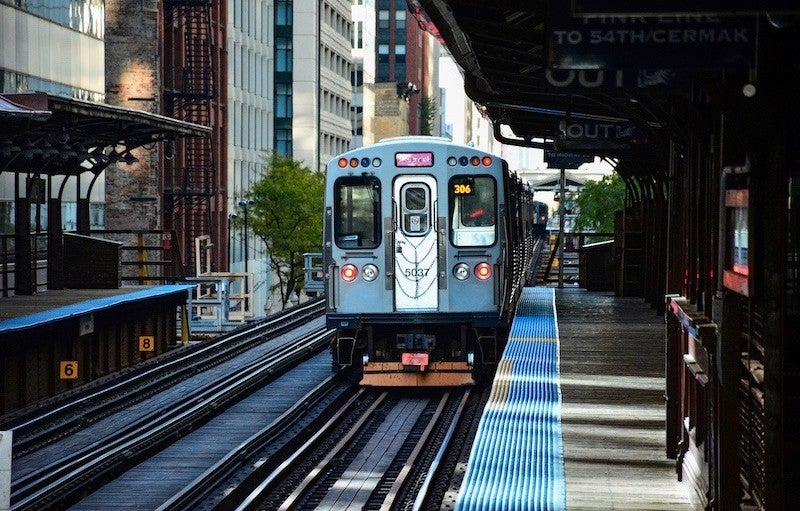How Auctioning Building Rights Can Help Fund Infrastructure and Affordable Housing

As U.S. cities struggle to provide adequate infrastructure and affordable housing, many are underutilizing one of their greatest assets: the land on which they sit. Cities generate large increases in the value of land when they change zoning regulations to enable new development or invest in public works projects, but private landowners typically capture the value as windfall profits.
The auction of development rights offers an innovative, market-based tool that can help cities to recover land value for public benefit. In a new Lincoln Institute working paper, Julie Kim of the NewCities Foundation and Stanford University’s Global Projects Center explores the use of this tool internationally and the potential for its implementation in the United States, especially for transit-oriented development.
“Big problems call for big solutions, and big solutions require big and innovative thinking,” Kim writes.
Kim focuses on Brazil’s largest city, São Paulo, which has issued tradeable development rights called Certificates of Additional Construction Potential (CEPACs, pronounced “see-packs”) for more than a decade. Issued in conjunction with major rezoning and redevelopment projects, these certificates have generated nearly $3 billion in two neighborhoods alone. The city has used the revenue to build a bridge, extend a metro line and a major avenue, and create affordable housing in the same districts where the redevelopment took place.
How CEPACs work
Beginning in the 1990s, São Paulo designated a number of neighborhoods as special redevelopment zones. The city changed the zoning and land use regulations to allow for more dense development and planned for infrastructure projects that would help attract private investment. In a few of the neighborhoods, the city created tradeable CEPACs, which each permit the owner to create a specified amount of development, typically about 10 square feet, up to an allowed maximum.
The city has sold CEPACs at dozens of public auctions, and developers have gladly purchased the certificates, recognizing that the rezoning and the infrastructure funded by the CEPACs made their projects more valuable. For São Paulo, the CEPACs are a tool that allows the city to specify the amount of new development it wants and generate revenue while allowing the real estate market to determine the potential value of plots in the redeveloped area.
The advantages for U.S. cities
For U.S. cities, the auction of development rights could be an effective complement to traditional public-private partnerships (or P3s), in which the private sector builds new infrastructure in exchange for the right to future revenues—highway tolls, for example—or more direct forms of repayment by the city. P3s can be an efficient way for cities to deliver and finance infrastructure, but taxpayers or infrastructure users must ultimately repay the cost. CEPACs, by contrast, can generate revenues for repayment.
The São Paulo model also has advantages over tax increment financing, or TIF, in which cities earmark property tax revenues for economic development to encourage private investment, which in turn helps to grow the tax base. Studies have found that TIF often does not accomplish the intended economic development goal, but, more importantly, TIF does not create a new source of revenue beyond the property tax. CEPACs, by contrast, generate new revenues immediately while also expanding the property tax base for the future.
CEPACs may be most similar to exactions, the monetary payments or public amenities that U.S. cities sometimes collect in exchange for approving development projects. However, unlike CEPACs, these exactions often require lengthy, unpredictable negotiations, which vary depending on the developer’s political relationships.
Finally, CEPACs bring a new player—the private investor—into the infrastructure market, which can help spread out the risks and rewards of projects more widely.
The U.S. experience so far
There is ample precedent in the United States for tapping the value of development rights. Many cities allow for the transfer of development rights as a tool to protect historic landmarks or create parks and open space. Policies vary, but in general owners of properties that are restricted from being developed can sell unused development rights to others who want to build nearby. The buyer of the development rights sometimes pays a portion of the proceeds to fund transit or other public improvements.
Like São Paulo, New York City has integrated the sale of development rights into land use planning for specific neighborhoods. For example, the city recently rezoned the area surrounding Grand Central Terminal and relaxed its rules to allow for the sale of development rights throughout an 80-block area. The city will collect a 20-percent fee for each sale to help fund renovations of subway stations, new plazas, pedestrian- and bicycle-friendly street upgrades, and other public improvements.
The auction of development rights could become increasingly attractive as U.S. cities seek to densify to address environmental challenges, traffic problems, and the lack of affordable housing.
“The up-zoning incentives that underlie CEPACs may be just the catalyst needed to trigger robust transit-oriented development projects in major U.S. cities that have yet to be materialized,” writes Kim.
Photograph Credit: Virtual VV (Getty Images)